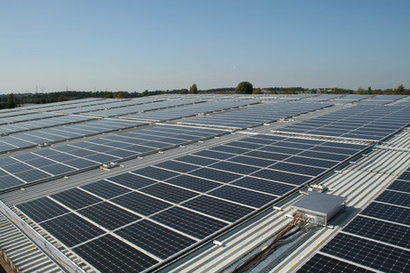
Constituting 2.5 percent of the nation’s electricity generation today, solar will account for 20 percent of all electricity generation by 2030, under SEIA’s aggressive target. To chart the industry’s course, SEIA is producing a roadmap to the Solar+ Decade that will lay out the policy, social, environmental and economic elements that will need to be in place to make solar the leading source of new power generation in the 2020s.
Over the next 10 years, the Solar+ Decade will be about collaboration and building the partnerships and expertise needed to overcome systemic challenges preventing the widescale adoption of solar. To achieve this goal, solar, wind and storage must work together to transform a complex and interrelated world of markets, customers and electricity systems.
“It is incumbent upon us to create a shared clean energy vision” said Abigail Ross Hopper, SEIA’s president and CEO. “It won’t be just the Solar Decade, but the Solar+ Decade where Solar + Storage, Solar + Grid Modernization, Solar + Wind, and Solar+ Overwhelming Public Support combine to define our nation’s clean energy future. The goal is bold but achievable. If we hit 20 percent solar by 2030, we will prove that solving the climate challenge won’t hurt the economy, but instead will be one of the greatest economic growth opportunities in decades.
To meaningfully address climate change and expand the benefits that low-priced clean energy brings to the economy, solar must account for a much larger share of US electricity. Increasing solar generation from 2.5 percent today to 20 percent by 2030 could add more than $345 billion into the US economy and grow the workforce to 600,000 solar professionals, from nearly 250,000 today.
Indeed, this effort isn’t without its challenges. To get there, the industry must reach an average annual growth rate of 18 percent and cost reductions across all market segments by nearly 50 percent. The industry will need to install an average of 39 gigawatts (GW) each year throughout the 2020s, including 77 GW in 2030 alone.
On May 15, Ms. Hopper testified before the House Science, Space, and Transportation Committee’s Subcommittee on Energy where she outlined the technical and market challenges the industry needs to overcome. These challenges and priority research areas include:
Growing a more diverse workforce which will require federal job training.
Cutting soft costs and streamlining permitting and interconnection processes.
Prioritising the security and resilience of the grid by easing grid integration and creating cyber secure technologies.
Supporting advanced manufacturing and later stage demonstration and deployment projects that enable the scale up of energy storage.
“The 2020s will be the decade where we take action and work with our partners to solve our most pressing climate problems” Hopper added. “The stakes have never been higher as we take our first steps into the Solar+ Decade.”
For additional information:

